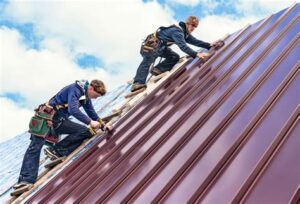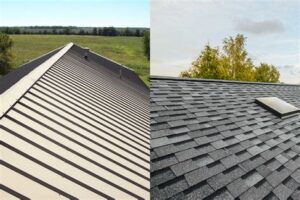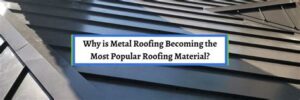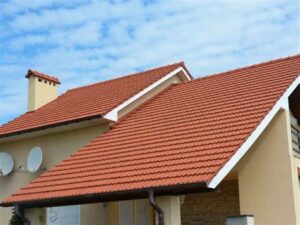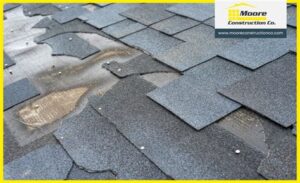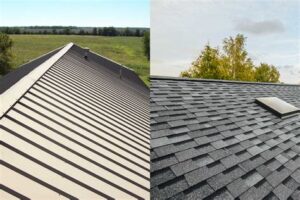When it comes to roofing, one essential element that often goes overlooked is metal flashing. This durable, protective barrier plays a crucial role in preventing leaks and water damage, safeguarding your home for years to come. However, the installation costs can add up, prompting many homeowners to seek ways to save money without compromising quality. In this article, we will explore practical strategies for selecting cost-effective metal flashing materials, provide DIY tips for efficient installation, and highlight common pitfalls to avoid. By understanding the significance of metal flashing and following our guidelines, you can achieve long-term savings while ensuring that your roof remains in top-notch condition. Let’s dive into the world of metal flashing and discover how to make your roofing project both budget-friendly and effective.
Understanding The Importance Of Metal Flashing For Roofing
Metal flashing is an essential component of any roofing system, acting as a protective barrier against water intrusion. Properly installed flashing can drastically reduce the risk of leaks, which can lead to costly water damage and rot over time. Understanding how to utilize this critical element will not only prolong the life of your roof but also save you significant amounts of money in repair costs.
Flashing is typically installed around areas of the roof that are prone to water accumulation, such as chimneys, vent pipes, and roof valleys. It works by channeling water away from joints and seams, ensuring that the underlying materials remain dry. This is particularly important in climates with heavy rainfall or snowfall, where water management is crucial.
Moreover, using quality metal flashing materials enhances the durability and effectiveness of your roofing system. Materials like aluminum, copper, and galvanized steel are known for their longevity and resistance to corrosion. By investing time and resources into the right flashing, you can avoid frequent replacements and repairs, ultimately leading to greater overall savings.
Additionally, metal flashing contributes to the energy efficiency of your home. By preventing leaks, it helps maintain desired indoor temperatures, reducing the strain on heating and cooling systems. This translates into lower energy bills over time, reinforcing the importance of proper installation.
Understanding the importance of metal flashing in roofing is key to achieving a durable, efficient, and cost-effective roof. When considering how to approach metal flashing installation, prioritize quality materials and proper techniques to ensure the longevity of your roofing investment.
How To Choose Cost-Effective Metal Flashing Materials
Choosing the right materials for metal flashing is essential for ensuring durability while also being cost-effective. Here are some key factors to consider when evaluating different options:
By keeping these factors in mind, you will be better equipped to choose how to select cost-effective metal flashing materials for your roofing project, ultimately maximizing your investment while ensuring effective protection against water damage.
DIY Tips For Installing Metal Flashing Efficiently
Installing metal flashing can be a rewarding DIY project that not only enhances your roof’s durability but also saves you money. To help you navigate this task, here are some practical how to tips for efficient installation:
By following these how to tips, you can install metal flashing efficiently while minimizing costs and ensuring long-term protection for your roof.
Common Mistakes To Avoid When Installing Metal Flashing
When learning how to install metal flashing, it’s crucial to be aware of common pitfalls that can undermine your project. Avoiding these mistakes will not only improve the quality of your work but also help you save money in the long run.
| Mistake | Consequences | Solution |
|---|---|---|
| Poor Measurements | Ill-fitting flashing can lead to leaks. | Double-check measurements before cutting materials. |
| Neglecting Proper Overlap | Water can seep beneath the flashing. | Ensure a minimum of 2 inches overlap in joints. |
| Inadequate Fastening | Flashing may detach during heavy winds. | Use appropriate fasteners and sealants for durability. |
| Ignoring Local Building Codes | May result in fines or needing to redo work. | Research and follow local regulations. |
| Not Considering Expansion and Contraction | Flashing can buckle, causing gaps. | Leave space for thermal expansion in your installation. |
By keeping these common mistakes in mind, you can approach your metal flashing installation with greater confidence, ensuring that you effectively save money and time while delivering a quality finish. Adhering to best practices will empower you on your journey of how to properly install metal flashing for a long-lasting roof.
Long-Term Savings From Properly Installed Metal Flashing
Investing in quality metal flashing and ensuring it is properly installed can lead to significant long-term savings for homeowners. Here are some key ways that effective metal flashing contributes to financial benefits over time:
- Preventing Water Damage: Properly installed metal flashing acts as a barrier against water infiltration. This prevents costly water damage to your roofing structure and interiors, which can lead to expensive repairs if not addressed promptly.
- Reducing Energy Costs: Metal flashing can improve the insulation of your roof and enhance ventilation, leading to lower heating and cooling costs. Efficient temperature regulation in your home reduces energy expenditure over time.
- Extending Roof Lifespan: By preventing leaks and water damage, metal flashing ensures that your roofing materials last longer. A longer lifespan means you’ll save significantly on the cost of premature roof replacements and repairs.
- Lower Maintenance Expenses: When metal flashing is installed correctly, it requires minimal maintenance. This translates to fewer expenses related to routine inspections and repairs, allowing you to allocate funds elsewhere.
Overall, when considering how to save money on your roofing projects, investing in quality metal flashing and its proper installation can provide substantial long-term financial benefits.
| Benefit | Description |
|---|---|
| Prevent Water Damage | Saves on potential costly repairs due to leaks and water intrusion. |
| Reduce Energy Costs | Enhances insulation, leading to lower utility bills. |
| Extend Roof Lifespan | Reduces the need for roof replacements. |
| Lower Maintenance | Less frequent inspections and fewer repairs. |
Frequently Asked Questions
What is metal flashing and why is it important for roofs?
Metal flashing is a thin layer of metal used to direct water away from critical areas of the roof, preventing leaks and water damage. It’s important for maintaining the integrity of the roofing system.
What are some cost-effective materials for metal flashing?
Aluminum and galvanized steel are often recommended for cost-effective metal flashing. They are durable, corrosion-resistant, and generally less expensive than copper or stainless steel.
How can I prepare my roof for metal flashing installation?
To prepare your roof, ensure that the surface is clean, dry, and free from debris. Removing any old flashing and repairing any damaged shingles or roofing material will also help ensure a successful installation.
What do I need to consider when measuring for metal flashing?
When measuring for metal flashing, consider the dimensions of the roof edges and any roof features like valleys, chimneys, or skylights. It’s essential to measure twice to avoid costly mistakes.
Are there DIY techniques to save money on metal flashing installation?
Yes, you can save money by installing the flashing yourself. Ensure you have the right tools, follow installation guidelines carefully, and take your time to do it correctly to avoid future repairs.
What common mistakes should I avoid when installing metal flashing?
Common mistakes include improper measurements, not sealing joints adequately, and neglecting to use the right fasteners. Avoiding these mistakes will help you achieve a watertight seal.
Can I find discounts or bulk deals on metal flashing materials?
Yes, many home improvement stores offer discounts on bulk purchases. Additionally, keep an eye out for seasonal sales, and consider checking with local suppliers for wholesale options.
